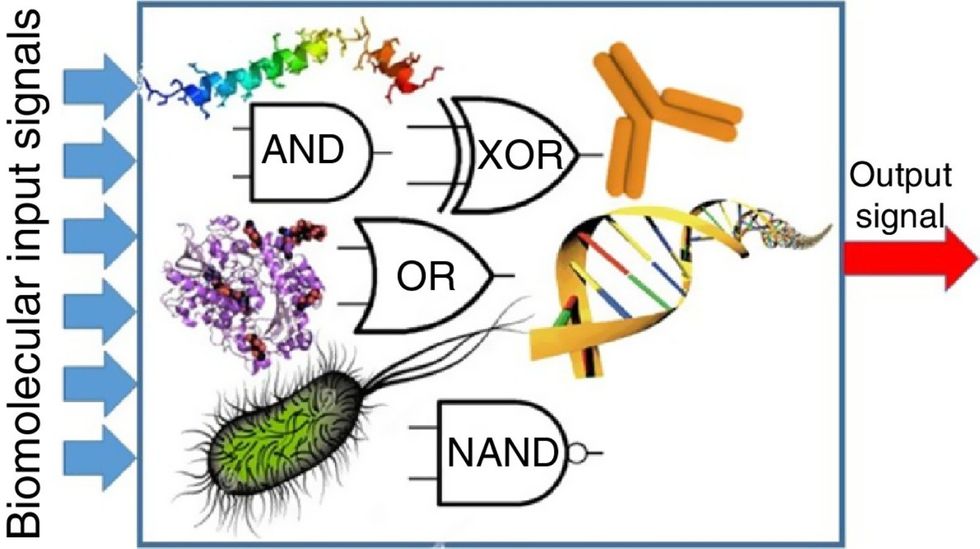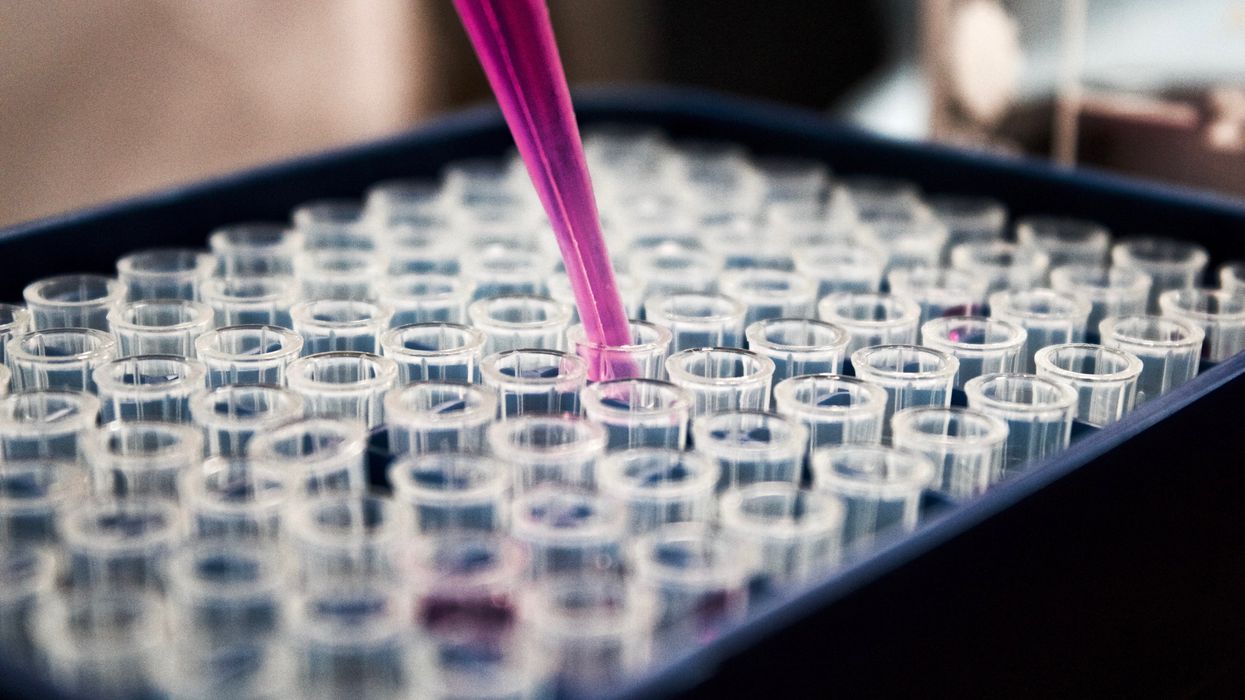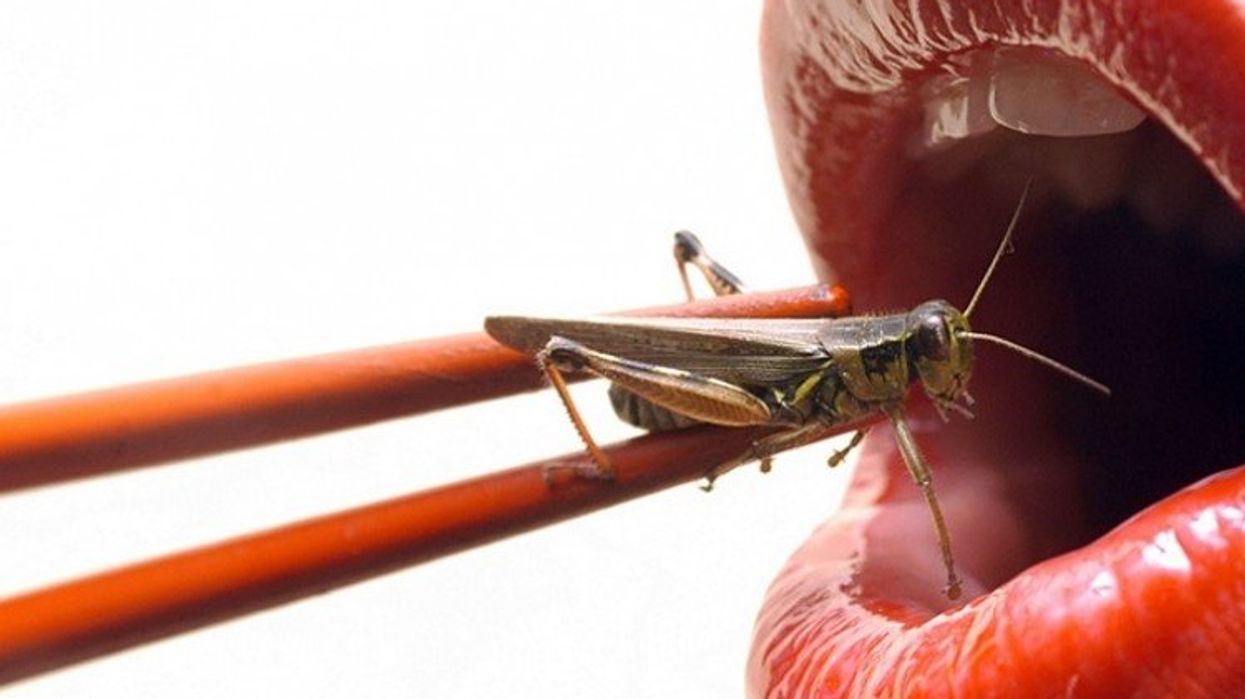Forcing Vaccination on Every Child Undermines Civil Liberties

The author's son Chris, at two years old in the summer of 1980, before his 4th DPT shot.
[Editor's Note: This opinion essay is in response to our current Big Question, which we posed to experts with different viewpoints: "Where should society draw the line between requiring vaccinations for children and allowing parental freedom of choice?"]
Our children are the future. The survival of humanity is advanced by the biological imperative that mothers and fathers want and need to protect their children and other children from being harmed for any reason.
Science is not perfect, doctors are not infallible, and medical interventions come with risks.
In the 21st century, consensus science considers vaccination to be one of the greatest inventions in the history of medicine and the greatest achievement of public health programs. The national vaccination rate for U.S. kindergarten children is 94 percent and most children today receive 69 doses of 16 federally recommended vaccines. However, public health is not simply measured by high vaccination rates and absence of infectious disease, which is evidenced by the chronic inflammatory disease and disability epidemic threatening to bankrupt the U.S. health care system.
Science is not perfect, doctors are not infallible, and medical interventions come with risks, which is why parents have the power to exercise informed consent to medical risk taking on behalf of their minor children.
As a young mother, I learned that vaccine risks are 100 percent for some children because, while we are all born equal under the law, we are not born all the same. Each one of us enters this world with different genes, a unique microbiome and epigenetic influences that affect how we respond to the environments in which we live. We do not all respond the same way to infectious diseases or to pharmaceutical products like vaccines.
Few parents were aware of vaccine side effects in 1980, when my bright, healthy two-and-a-half year-old son, Chris, suffered a convulsion, collapse, and state of unconsciousness (encephalopathy) within hours of his fourth DPT shot, and then regressed physically, mentally and emotionally and became a totally different child. Chris was eventually diagnosed with multiple learning disabilities and confined to a special education classroom throughout his public school education, but he and I both know his vaccine reaction could have been much worse. Today, Chris is an independent adult but many survivors of brain injury are not.

Barbara Loe Fisher and her son, Chris, in December 1981 after his fourth DPT shot.
(Courtesy Fisher)
The public conversation about several hundred cases of measles reported in the U.S. this year is focused on whether every parent has a social obligation to vaccinate every child to maintain "community immunity," but vaccine failures are rarely discussed. Emerging science reveals that there are differences in naturally and vaccine acquired immunity, and both vaccinated and unvaccinated children and adults transmit infections, sometimes with few or no symptoms.
Nearly 40 percent of cases reported in the 2015 U.S. measles outbreak occurred in recently vaccinated individuals who developed vaccine reactions that appeared indistinguishable from measles. Outbreaks of pertussis (whooping cough) in highly vaccinated child populations have been traced to waning immunity and evolution of the B. pertussis microbe to evade the vaccines. Influenza vaccine effectiveness was less than 50 percent in 11 of the past 15 flu seasons.
Vaccine policymakers recognize that children with severe combined immune deficiency or those undergoing chemotherapy or organ transplants are at increased risk for complications of infectious diseases and vaccines. However, there is no recognition of the risks to healthy infants and children with unidentified susceptibility to vaccine reactions, including children whose health suddenly deteriorates without explanation after vaccination. Medical care is being denied to children and adults in the U.S. if even one government recommended vaccination is declined, regardless of health or vaccine reaction history.
When parents question the risks and failures of a commercial pharmaceutical product being mandated for every child, the answer is not more force but better science and respect for the informed consent ethic.
The social contract we have with each other when we live in communities, whether we belong to the majority or a minority, is to care about and protect every individual living in the community. One-size-fits-all vaccine policies and laws, which fail to respect biodiversity and force everyone to be treated the same, place an unequal risk burden on a minority of unidentified individuals unable to survive vaccination without being harmed.
A law that requires certain minorities to bear a greater risk of injury or sacrifice their lives in service to the majority is not just or moral.
Between 1991 and 2013, the Institute of Medicine (IOM) published reports documenting that vaccines can cause brain inflammation and other serious reactions, injuries and death. A 2012 IOM report acknowledged that there are genetic, biological, and environmental risk factors that make some individuals more susceptible to adverse responses to vaccines but often doctors cannot identify who they are because of gaps in vaccine science. Congress acknowledged this fact a quarter century earlier in the 1986 National Childhood Vaccine Injury Act, which created a federal vaccine injury compensation program alternative to a lawsuit that has awarded more than $4 billion to vaccine-injured children and adults.
We give up the human right to autonomy and informed consent at our peril, no matter where or in what century we live.
Vaccine manufacturers and administrators have liability protection, yet today almost no health condition qualifies for a medical vaccine exemption under government guidelines. Now, there is a global call by consensus science advocates for elimination of all personal belief vaccine exemptions and censorship of books and public conversations that criticize vaccine safety or government vaccine policy. Some are calling for quarantine of all who refuse vaccinations and criminal prosecution, fines and imprisonment of parents with unvaccinated children, as well as punishment of doctors who depart from government policy.
There is no civil liberty more fundamentally a natural, inalienable right than exercising freedom of thought and conscience when deciding when and for what reason we are willing to risk our life or our child's life. That is why voluntary, informed consent to medical risk-taking has been defined as a human right governing the ethical practice of modern medicine.
In his first Presidential inaugural address, Thomas Jefferson warned:
"All, too, will bear in mind this sacred principle, that though the will of the majority is in all cases to prevail, that will to be rightful must be reasonable; that the minority posses their equal rights, which equal law must protect, and to violate would be oppression."
The seminal 1905 U.S. Supreme Court decision, Jacobson v. Massachusetts, affirmed the constitutional authority of states to enact mandatory smallpox vaccination laws. However, the justices made it clear that implementation of a vaccination law should not become "cruel and inhuman to the last degree." They warned, "All laws, this court has said, should receive a sensible construction. General terms should be so limited in their application as not to lead to injustice, oppression, or an absurd consequence. It will always, therefore, be presumed that the legislature intended exceptions to its language, which would avoid results of this character."
Mothers and fathers, who know and love their children better than anyone else, depend upon sound science and compassionate public health policies to help them protect their own and other children from harm. If individuals susceptible to vaccine injury cannot be reliably identified, the accuracy of vaccine benefit and risk calculations must be reexamined. Yet, consensus science and medicine around vaccination discourages research into the biological mechanisms of vaccine injury and death and identification of individual risk factors to better inform public health policy.
A critic of consensus science, physician and author Michael Crichton said, "Let's be clear: the work of science has nothing whatever to do with consensus. Consensus is the business of politics. Period."
Condoning elimination of civil liberties, including freedom of speech and the right to dissent guaranteed under the First Amendment of the U.S. Constitution, to enforce vaccination creates a slippery slope. Coercion, punishment and censorship will destroy, not instill, public trust in the integrity of medical practice and public health laws.
There are more than a dozen new vaccines being fast tracked to market by industry and governments. Who in society should be given the power to force all children to use every one of them without parental consent regardless of how small or great the risk?
We give up the human right to autonomy and informed consent at our peril, no matter where or in what century we live. Just and compassionate public health laws that protect parental and human rights will include flexible medical, religious and conscientious belief vaccine exemptions to affirm the informed consent ethic and prevent discrimination against vulnerable minorities.
[Editor's Note: Read the opposite viewpoint here.]
DNA- and RNA-based electronic implants may revolutionize healthcare
The test tubes contain tiny DNA/enzyme-based circuits, which comprise TRUMPET, a new type of electronic device, smaller than a cell.
Implantable electronic devices can significantly improve patients’ quality of life. A pacemaker can encourage the heart to beat more regularly. A neural implant, usually placed at the back of the skull, can help brain function and encourage higher neural activity. Current research on neural implants finds them helpful to patients with Parkinson’s disease, vision loss, hearing loss, and other nerve damage problems. Several of these implants, such as Elon Musk’s Neuralink, have already been approved by the FDA for human use.
Yet, pacemakers, neural implants, and other such electronic devices are not without problems. They require constant electricity, limited through batteries that need replacements. They also cause scarring. “The problem with doing this with electronics is that scar tissue forms,” explains Kate Adamala, an assistant professor of cell biology at the University of Minnesota Twin Cities. “Anytime you have something hard interacting with something soft [like muscle, skin, or tissue], the soft thing will scar. That's why there are no long-term neural implants right now.” To overcome these challenges, scientists are turning to biocomputing processes that use organic materials like DNA and RNA. Other promised benefits include “diagnostics and possibly therapeutic action, operating as nanorobots in living organisms,” writes Evgeny Katz, a professor of bioelectronics at Clarkson University, in his book DNA- And RNA-Based Computing Systems.
While a computer gives these inputs in binary code or "bits," such as a 0 or 1, biocomputing uses DNA strands as inputs, whether double or single-stranded, and often uses fluorescent RNA as an output.
Adamala’s research focuses on developing such biocomputing systems using DNA, RNA, proteins, and lipids. Using these molecules in the biocomputing systems allows the latter to be biocompatible with the human body, resulting in a natural healing process. In a recent Nature Communications study, Adamala and her team created a new biocomputing platform called TRUMPET (Transcriptional RNA Universal Multi-Purpose GatE PlaTform) which acts like a DNA-powered computer chip. “These biological systems can heal if you design them correctly,” adds Adamala. “So you can imagine a computer that will eventually heal itself.”
The basics of biocomputing
Biocomputing and regular computing have many similarities. Like regular computing, biocomputing works by running information through a series of gates, usually logic gates. A logic gate works as a fork in the road for an electronic circuit. The input will travel one way or another, giving two different outputs. An example logic gate is the AND gate, which has two inputs (A and B) and two different results. If both A and B are 1, the AND gate output will be 1. If only A is 1 and B is 0, the output will be 0 and vice versa. If both A and B are 0, the result will be 0. While a computer gives these inputs in binary code or "bits," such as a 0 or 1, biocomputing uses DNA strands as inputs, whether double or single-stranded, and often uses fluorescent RNA as an output. In this case, the DNA enters the logic gate as a single or double strand.
If the DNA is double-stranded, the system “digests” the DNA or destroys it, which results in non-fluorescence or “0” output. Conversely, if the DNA is single-stranded, it won’t be digested and instead will be copied by several enzymes in the biocomputing system, resulting in fluorescent RNA or a “1” output. And the output for this type of binary system can be expanded beyond fluorescence or not. For example, a “1” output might be the production of the enzyme insulin, while a “0” may be that no insulin is produced. “This kind of synergy between biology and computation is the essence of biocomputing,” says Stephanie Forrest, a professor and the director of the Biodesign Center for Biocomputing, Security and Society at Arizona State University.

Biocomputing circles are made of DNA, RNA, proteins and even bacteria.
Evgeny Katz
The TRUMPET’s promise
Depending on whether the biocomputing system is placed directly inside a cell within the human body, or run in a test-tube, different environmental factors play a role. When an output is produced inside a cell, the cell's natural processes can amplify this output (for example, a specific protein or DNA strand), creating a solid signal. However, these cells can also be very leaky. “You want the cells to do the thing you ask them to do before they finish whatever their businesses, which is to grow, replicate, metabolize,” Adamala explains. “However, often the gate may be triggered without the right inputs, creating a false positive signal. So that's why natural logic gates are often leaky." While biocomputing outside a cell in a test tube can allow for tighter control over the logic gates, the outputs or signals cannot be amplified by a cell and are less potent.
TRUMPET, which is smaller than a cell, taps into both cellular and non-cellular biocomputing benefits. “At its core, it is a nonliving logic gate system,” Adamala states, “It's a DNA-based logic gate system. But because we use enzymes, and the readout is enzymatic [where an enzyme replicates the fluorescent RNA], we end up with signal amplification." This readout means that the output from the TRUMPET system, a fluorescent RNA strand, can be replicated by nearby enzymes in the platform, making the light signal stronger. "So it combines the best of both worlds,” Adamala adds.
These organic-based systems could detect cancer cells or low insulin levels inside a patient’s body.
The TRUMPET biocomputing process is relatively straightforward. “If the DNA [input] shows up as single-stranded, it will not be digested [by the logic gate], and you get this nice fluorescent output as the RNA is made from the single-stranded DNA, and that's a 1,” Adamala explains. "And if the DNA input is double-stranded, it gets digested by the enzymes in the logic gate, and there is no RNA created from the DNA, so there is no fluorescence, and the output is 0." On the story's leading image above, if the tube is "lit" with a purple color, that is a binary 1 signal for computing. If it's "off" it is a 0.
While still in research, TRUMPET and other biocomputing systems promise significant benefits to personalized healthcare and medicine. These organic-based systems could detect cancer cells or low insulin levels inside a patient’s body. The study’s lead author and graduate student Judee Sharon is already beginning to research TRUMPET's ability for earlier cancer diagnoses. Because the inputs for TRUMPET are single or double-stranded DNA, any mutated or cancerous DNA could theoretically be detected from the platform through the biocomputing process. Theoretically, devices like TRUMPET could be used to detect cancer and other diseases earlier.
Adamala sees TRUMPET not only as a detection system but also as a potential cancer drug delivery system. “Ideally, you would like the drug only to turn on when it senses the presence of a cancer cell. And that's how we use the logic gates, which work in response to inputs like cancerous DNA. Then the output can be the production of a small molecule or the release of a small molecule that can then go and kill what needs killing, in this case, a cancer cell. So we would like to develop applications that use this technology to control the logic gate response of a drug’s delivery to a cell.”
Although platforms like TRUMPET are making progress, a lot more work must be done before they can be used commercially. “The process of translating mechanisms and architecture from biology to computing and vice versa is still an art rather than a science,” says Forrest. “It requires deep computer science and biology knowledge,” she adds. “Some people have compared interdisciplinary science to fusion restaurants—not all combinations are successful, but when they are, the results are remarkable.”
Crickets are low on fat, high on protein, and can be farmed sustainably. They are also crunchy.
In today’s podcast episode, Leaps.org Deputy Editor Lina Zeldovich speaks about the health and ecological benefits of farming crickets for human consumption with Bicky Nguyen, who joins Lina from Vietnam. Bicky and her business partner Nam Dang operate an insect farm named CricketOne. Motivated by the idea of sustainable and healthy protein production, they started their unconventional endeavor a few years ago, despite numerous naysayers who didn’t believe that humans would ever consider munching on bugs.
Yet, making creepy crawlers part of our diet offers many health and planetary advantages. Food production needs to match the rise in global population, estimated to reach 10 billion by 2050. One challenge is that some of our current practices are inefficient, polluting and wasteful. According to nonprofit EarthSave.org, it takes 2,500 gallons of water, 12 pounds of grain, 35 pounds of topsoil and the energy equivalent of one gallon of gasoline to produce one pound of feedlot beef, although exact statistics vary between sources.
Meanwhile, insects are easy to grow, high on protein and low on fat. When roasted with salt, they make crunchy snacks. When chopped up, they transform into delicious pâtes, says Bicky, who invents her own cricket recipes and serves them at industry and public events. Maybe that’s why some research predicts that edible insects market may grow to almost $10 billion by 2030. Tune in for a delectable chat on this alternative and sustainable protein.
Listen on Apple | Listen on Spotify | Listen on Stitcher | Listen on Amazon | Listen on Google
Further reading:
More info on Bicky Nguyen
https://yseali.fulbright.edu.vn/en/faculty/bicky-n...
The environmental footprint of beef production
https://www.earthsave.org/environment.htm
https://www.watercalculator.org/news/articles/beef-king-big-water-footprints/
https://www.frontiersin.org/articles/10.3389/fsufs.2019.00005/full
https://ourworldindata.org/carbon-footprint-food-methane
Insect farming as a source of sustainable protein
https://www.insectgourmet.com/insect-farming-growing-bugs-for-protein/
https://www.sciencedirect.com/topics/agricultural-and-biological-sciences/insect-farming
Cricket flour is taking the world by storm
https://www.cricketflours.com/
https://talk-commerce.com/blog/what-brands-use-cricket-flour-and-why/

Lina Zeldovich has written about science, medicine and technology for Popular Science, Smithsonian, National Geographic, Scientific American, Reader’s Digest, the New York Times and other major national and international publications. A Columbia J-School alumna, she has won several awards for her stories, including the ASJA Crisis Coverage Award for Covid reporting, and has been a contributing editor at Nautilus Magazine. In 2021, Zeldovich released her first book, The Other Dark Matter, published by the University of Chicago Press, about the science and business of turning waste into wealth and health. You can find her on http://linazeldovich.com/ and @linazeldovich.

